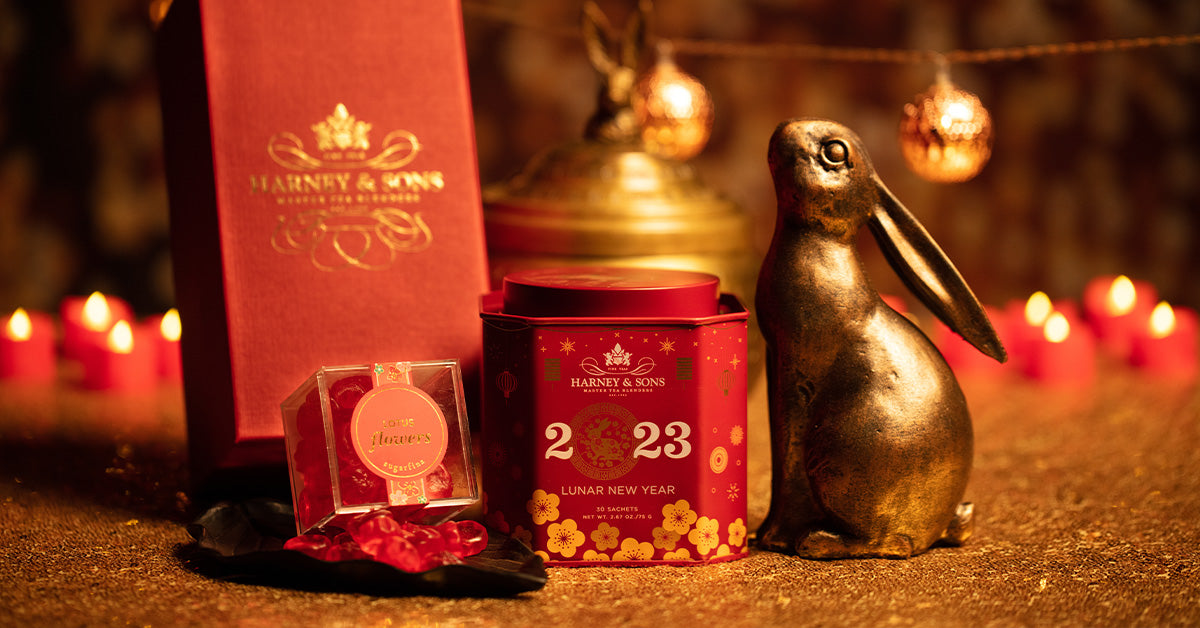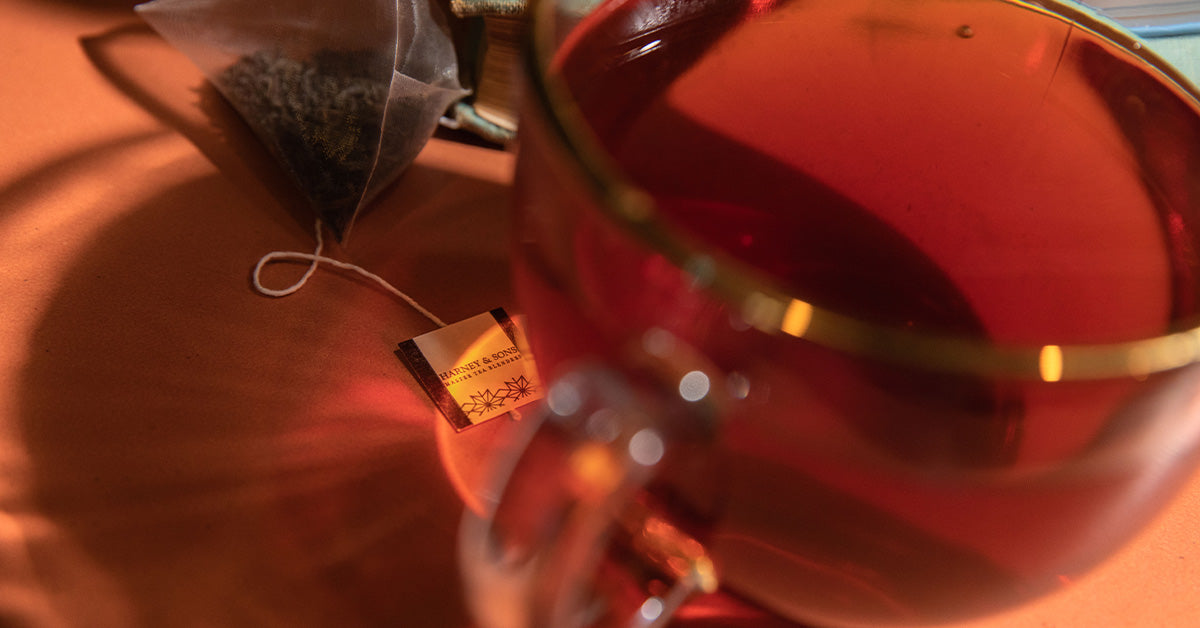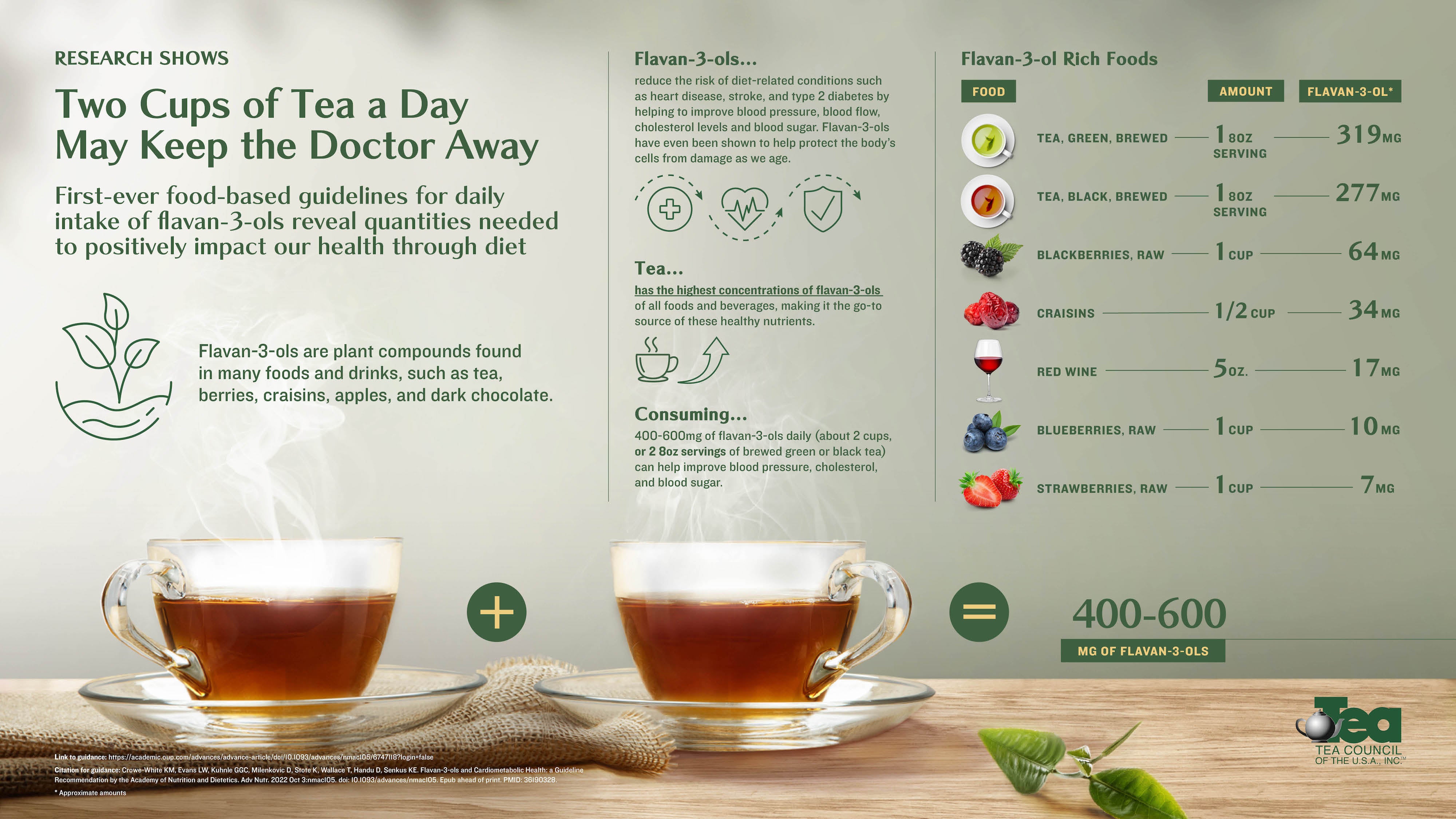We love Chinese New Year for several reasons. First, China is the motherland of tea, so we clearly have a strong affinitea with that country for that reason. Second, Chinese New Year is full of wonderful traditions, a good dose of myth, and a strong sense of family. Throw in legends of monsters, fireworks, and red envelopes full of money – but only the right kind – and you’ve got quite a holiday. It is the most important festival in China and a major event in other East Asian countries.
The History
While the beginning of the celebration of Chinese New Year is not known for sure, many believe that it originated in the Shang Dynasty (1600-1046 BD), which means it’s been around for about 3500 years. Back then, people held sacrificial ceremonies in honor of gods and ancestors at the beginning or end of each year. Those ceremonies of “sacrificing” food in honor of deities and ancestors are still part of modern Chinese New Year rituals.
The date of the festival was set in the Han Dynasty (202 BC - 220 AD). Also known as the Lunar New Year, the celebration takes place at the beginning of the new year on the Chinese lunisolar calendar. The first day begins on the new moon that appears between January 21 and February 20. In 2023, the Chinese New Year begins on January 22.
The Myths
There are many legends and stories surrounding how and why Chinese New Year is celebrated the way it is, with the color red and firecrackers/fireworks in great prominence. The prevailing story centers in one way or another around a terrifying beast called Nian. In some stories, the beast came out every Lunar New Year’s eve to eat livestock and people, particularly children. One year, an elderly man stayed up to face the beast, putting up red papers (always a good defense against beasts) and crackled bamboo, which scared the Nian away. Ever since, the color red, putting up red papers, and lighting firecrackers and fireworks have been integral parts of celebrating Chinese New Year.

The Animal
The animals chosen to represent each year come from the animal sign for the year, as informed by the Chinese zodiac cycle. 2023 is the Year of the Rabbit, a sign that is a symbol of longevity, peace, and prosperity. This year is predicted to be a year of hop…we mean hope! Seriously, it’s supposed to be a year of hope; you see what we did there.
The Celebrations
This is a 16-day party that begins on Chinese New Year’s Eve and continues for 15 more days. New Year’s Eve is a time when families gather for what is called the reunion dinner. Generations gather together to enjoy a feast and pay homage to their ancestors. Prior to the party starting, however, is a time of serious house cleaning. This is done to sweep away any ill-fortune and make way for incoming good luck. Cleaning on New Year’s Eve is considered bad luck as you are sweeping away the good luck that the new year brings. If you’re going to go to the trouble of a serious house cleaning, you want to make sure you’re getting a positive result at the end rather than a negative one!
Also, in preparation for the festivities, red paper cutouts and couplets are used to decorate the home. In Chinese poetry, a couplet is a pair of lines of poetry that follow specific guidelines. When used to decorate, they are two banners or scrolls of words that are usually hung on either side of doors as you enter the home – best to ward the Nian off before he enters!
Every day in the 16-day celebration has its own meaning, and all of them feature food and tea, of course, which is China’s beverage of choice! Some of the more popular traditions and foods featured in Chinese New Year include:
- Red envelopes. The giving and receiving of red envelopes with money is a huge part of this celebration. It needs to be the right kind of money, however. Currency beginning with even numbers is preferred, with the exception of the number 4; that number is considered unlucky in Asian cultures. The red packets are known as “yasuiqian,” a word that means money meant to keep evil spirits away. Today, you can even give red envelopes via special apps, but that would make the tradition of sleeping with the red envelope under your pillow for seven nights a little bit more difficult.
- Firecrackers and fireworks. In addition to almost literally painting the town red with decorations, envelopes, and clothing, part two of the Get Nian plan is scaring the beast off with loud, celebratory noises. Billions of fireworks are set off at midnight and for several minutes afterward, on Chinese New Year’s Eve, the most set off at once anywhere in the world.
- Lion and dragon dances. We’ve all seen these beautiful costumes in parades, and they are a big part of Chinese New Year celebrations. Thought to bring good luck and prosperity, we think they are also another way to scare Nian off!
- Dumplings and fish and Nian Gao, oh my! Of the many traditional dishes prepared for this holiday, these are probably the top three. Dumplings are prepared in the shape of Chinese silver ingots and are a sign of prosperity. Fish symbolizes abundance, and Nian Gao (Mandarin for “higher year”) is a glutinous rice cake symbolizing a higher income or position. While it can be served year-round, it is known as Chinese New Year Cake because this is the most popular time of year it’s served.

Nian Gao is the inspiration behind our 2023 Lunar New Year tea. This blend of caramel, sesame, and coconut is reminiscent of this Chinese New Year Cake, a sticky, gooey dessert made primarily of rice flour, brown sugar, coconut milk, and other ingredients to create a caramel-like sweetness.
In addition to our Lunar New Year tea, there are several other amazing Chinese teas you can enjoy as you don your red and light your firecrackers.
Chinese Green Teas. You just can’t ever go wrong with a classic Chinese green tea. Start with a timeless Jasmine tea and go from there. A perfect tea for Chinese New Year.
Chinese Oolong Teas. If oolong for a classic Chinese tea, we’ve got you covered! Try one of these unique and quintessentially Chinese blends.
Chinese Black Teas. From something as routine (but wonderful) as English Breakfast to as traditional as Golden Monkey to as unique as Pu-Erh, we have a lovely collection of Chinese black teas from which to choose.
Here’s to your health and prosperity in 2023, the Year of the Rabbit!





3 comments
Viveka
This blend should be made a staple choice. It is delicious.
This blend should be made a staple choice. It is delicious.
Maria Espinal
This is my favorite tea ever and I would really really love it if you made it a permanent choice. I’m going to guess that it was a really popular flavor as it has been sold out for a long time.
This is my favorite tea ever and I would really really love it if you made it a permanent choice. I’m going to guess that it was a really popular flavor as it has been sold out for a long time.
Kat brown
I love this blend, and I really wish you guys would make this a permanent choice.
I love this blend, and I really wish you guys would make this a permanent choice.